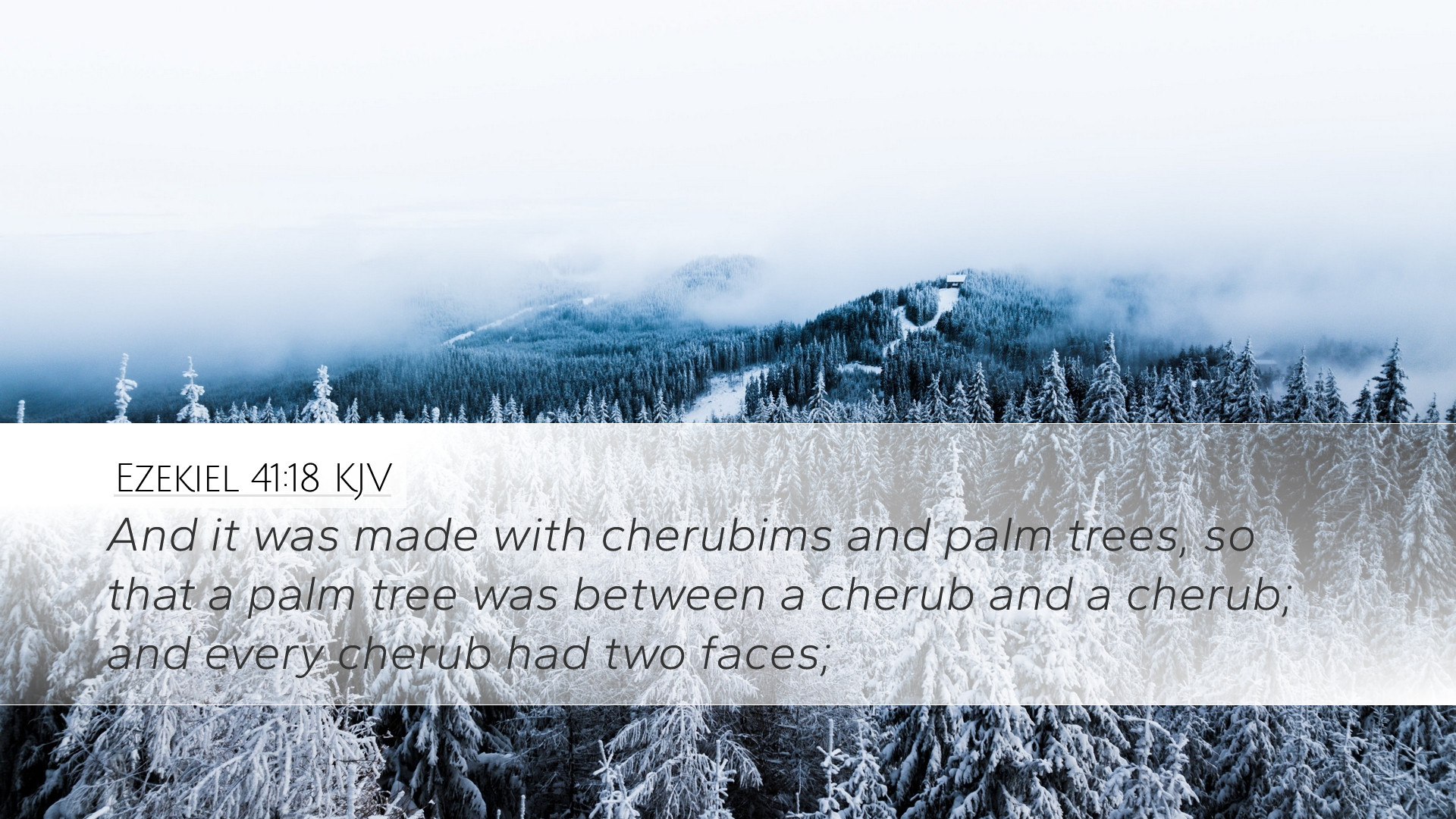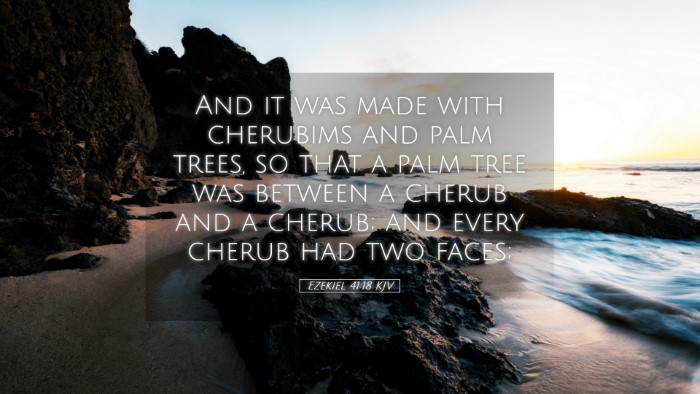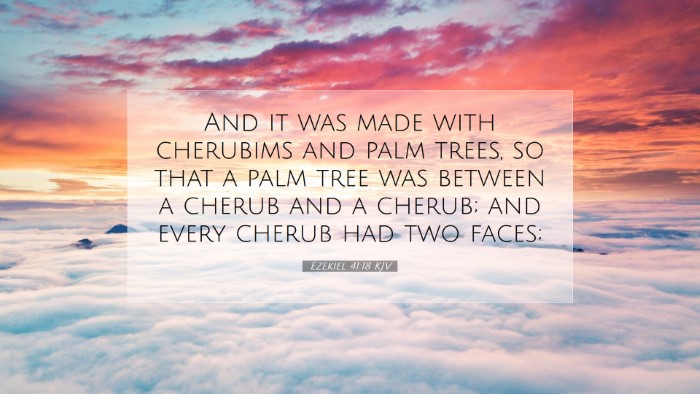Commentary on Ezekiel 41:18
In this verse, we find a description of the interior designs of the temple which Ezekiel is shown in his vision. The intricate details reveal much about the divine architecture and the spiritual implications of the temple.
Text of Ezekiel 41:18
"And it was made with cherubims and palm trees, so that a palm tree was between a cherub and a cherub; and every cherub had two faces;"
Commentary Overview
This commentary draws upon the insights of noted theologians such as Matthew Henry, Albert Barnes, and Adam Clarke. Each provides perspectives that delve into the symbolism and theological significance of the imagery used in this passage.
Symbolism of Cherubim
The cherubim mentioned in this verse are significant in biblical theology.
- Representation of Divine Presence: Cherubim often symbolize God’s glory and His guardianship over sacred spaces.
- Mystery and Majesty: They embody the mystery of God’s nature, a combination of majesty and intimate accessibility.
Henry notes that cherubim were a common theme in the designs of the temple, illustrating the connection between heaven and earth, and reminding us of God's dwelling among His people.
Meaning of Palm Trees
The integration of palm trees in the design holds profound meaning:
- Life and Abundance: Palm trees often signify life and prosperity in the biblical context. They are symbols of strength and endurance.
- Joy and Celebration: The palm is also associated with the joyous celebration of the Feast of Tabernacles, representing victory and triumph.
Barnes emphasizes that the presence of both cherubim and palm trees creates a picture of a place filled with life, beauty, and divine favor. This reflects God's desire to be present in a flourishing environment.
Theological Implications
The architectural details given in Ezekiel 41:18 are not mere descriptions but carry significant theological weight:
- Heavenly Blueprint: The temple serves as a model of the heavenly sanctuary, representing how God desires to commune with His creation.
- Accessibility to God: The imagery suggests that there is a way for humanity to approach God, emphasizing His desire for relationship and connection.
Clarke mentions that this passage can be viewed in the light of God's redemptive plan, where the temple stands as a precursor to the ultimate revelation of God in Jesus Christ, who is the new temple.
Application for Today
For pastors and theologians, the insights drawn from this verse encourage a deeper understanding of God’s nature and His overarching plans for humanity.
- Reflect on God’s Presence: The church today can draw from this imagery to emphasize that God's presence is central in our worship and our community.
- Foster Spiritual Growth: Just as the designs of the temple signify beauty and thoughtfulness, we should strive to cultivate beauty within our lives and church environments.
- Pursue Relationship with God: The palmtrees’ symbolism invites believers to remember the abundance of life that comes from an intimate relationship with God.
Conclusion
Ezekiel 41:18 serves as a powerful reminder of God's desire to dwell among His people, as symbolized through the cherubs and palm trees. Each detail in the temple's design represents a deeper theological truth that encourages believers to approach God with reverence and appreciation for His majesty.


